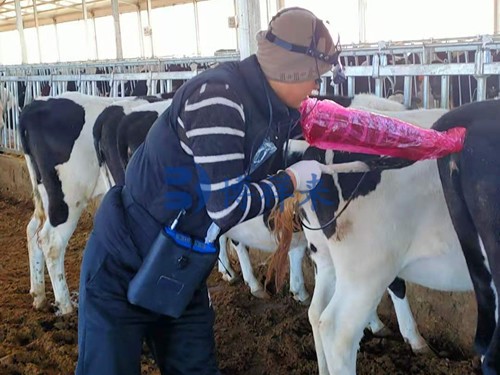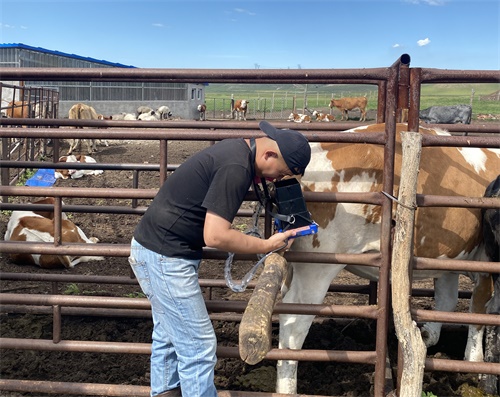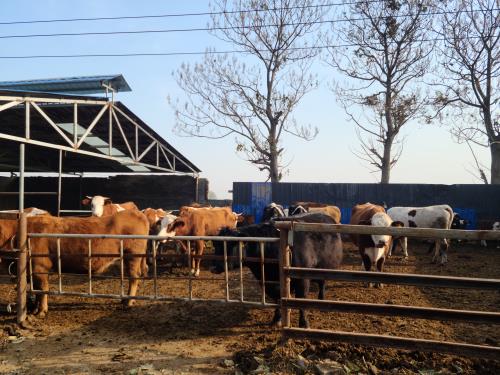Managing reproduction on small ruminant farms has always been both an art and a science. For producers of sheep and goats, achieving high reproductive efficiency is critical for farm profitability, flock health, and genetic improvement. However, one of the most frustrating challenges facing small ruminant farmers worldwide is early pregnancy loss—a problem that often goes unnoticed until it manifests as reduced lambing or kidding rates. Fortunately, advancements in veterinary ultrasonography now provide farmers with a reliable, non-invasive method to detect early pregnancy loss and make informed management decisions.

In this article, I’ll share how ultrasound scanners are revolutionizing reproductive management on small ruminant farms, explain how early pregnancy loss occurs, and highlight the growing role of ultrasound as an essential diagnostic tool for veterinarians and producers globally.
Understanding Early Pregnancy Loss in Small Ruminants
The Challenge of Early Pregnancy Loss
In sheep and goats, early pregnancy loss typically occurs within the first 30 to 60 days of gestation. While some losses may occur even before implantation, many happen after the embryo has initially attached to the uterine lining. This loss often goes undetected because, without the use of diagnostic technology, the female animal may still appear normal, cycle irregularly, or even maintain signs of pregnancy for a time due to retained hormonal signals.
According to studies in reproductive physiology, early pregnancy loss rates in small ruminants can range from 5% to over 20%, depending on genetics, nutrition, health status, environmental stress, infectious diseases, and management practices (Gonzalez-Bulnes et al., 2020). Identifying which females are no longer carrying viable pregnancies allows farmers to optimize rebreeding strategies, improve reproductive efficiency, and reduce overall losses.
The Role of Ultrasound in Detecting Early Pregnancy Loss
Why Ultrasound?
Ultrasound technology has become the gold standard for pregnancy diagnosis in livestock, particularly for early detection in sheep and goats. Unlike manual palpation or observing external signs, ultrasound provides real-time visualization of fetal structures, heartbeat activity, and uterine environment, even in the early stages of gestation.
Foreign veterinary practices, especially in countries like Australia, the USA, New Zealand, and parts of Europe, have widely embraced ultrasound scanning as a routine tool for flock management. In small ruminant operations, its adoption has proven cost-effective and extremely valuable.
The key advantages of using ultrasound scanners include:
Early detection (as early as 25-30 days post-breeding)
Non-invasive and stress-free
Accurate assessment of fetal viability
Determination of litter size
Monitoring uterine environment for abnormalities
As international studies have demonstrated, early identification of embryonic loss allows producers to make timely decisions, such as resynchronizing estrus cycles or modifying nutritional and health interventions (López-Sebastián et al., 2021).
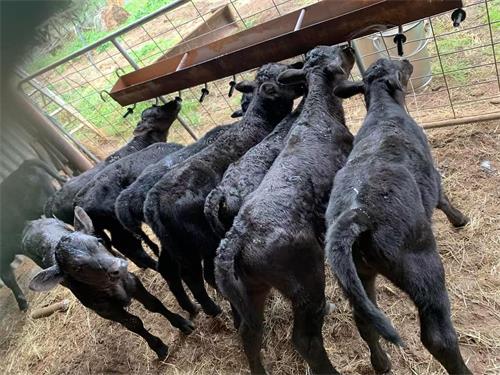
How Animal Ultrasound Scanners Work on the Farm
B-Mode Ultrasound Imaging
The most common mode used for pregnancy detection is B-mode (brightness mode) ultrasound. This technique generates a two-dimensional image of the uterus, allowing clear visualization of gestational sacs, fetal heartbeat, and placental structures.
During the early pregnancy phase (25-40 days), the trained operator can identify:
The presence or absence of embryos
Number of fetuses
Size and growth of the fetus
Placental attachment
Fetal heartbeat (clear sign of viability)
If an animal that was previously confirmed pregnant no longer shows fetal structures or heartbeat upon follow-up scanning, early pregnancy loss can be diagnosed confidently.
Portable Ultrasound in Field Conditions
Modern ultrasound scanners such as the BXL-V50 offer small ruminant farmers a rugged, portable, waterproof solution that can be used directly in the barn or pasture. With high-resolution screens, long battery life, and real-time imaging, veterinarians and trained technicians can perform large numbers of scans efficiently. The portability and ease of operation have contributed significantly to their popularity on farms worldwide.
Causes of Early Pregnancy Loss Detected by Ultrasound
Several factors contribute to early pregnancy loss in small ruminants, many of which can be monitored and, in some cases, corrected through ultrasound-guided intervention:
Nutritional Deficiencies
Undernutrition or imbalanced diets during early gestation can compromise embryo implantation and fetal development. Using ultrasound, farmers can detect growth delays or non-viable embryos early and adjust feeding protocols accordingly.Infectious Diseases
Pathogens such as Chlamydia abortus, Toxoplasma gondii, or Campylobacter species are known causes of pregnancy loss. Ultrasound allows veterinarians to spot abnormal uterine contents, such as fluid pockets, which may indicate infection-related abortions.Genetic Factors
Some flocks may have a higher incidence of chromosomal abnormalities that lead to embryonic loss. Detecting recurring patterns through ultrasound monitoring helps inform breeding stock selection.Environmental Stress
Heat stress, transport, or overcrowding can negatively affect early pregnancy. By monitoring pregnancy development through ultrasound, farmers can adjust management practices to reduce stressors.Hormonal Imbalances
Insufficient progesterone levels may prevent proper uterine maintenance of pregnancy. Serial ultrasound scans can reveal embryos that fail to grow, prompting possible hormonal supplementation.
Practical Implementation on the Farm
Ultrasound Pregnancy Checking Schedules
Based on best practices adopted in leading sheep and goat production regions, ultrasound scanning is typically scheduled as follows:
First Scan: Day 25–35 post-breeding
To confirm pregnancy, assess early viability, and identify non-pregnant animals for rebreeding.Follow-up Scan: Day 45–60
To monitor fetal development, reconfirm viability, and detect any early pregnancy loss.Late Pregnancy Scan: Day 90–100 (if necessary)
To assess late-term fetal growth, presentation, and predict birthing complications.
Training and Operator Skill
While ultrasound technology is user-friendly, correct interpretation of early pregnancy images requires training. Many countries now offer formal ultrasound certification courses for veterinarians and technicians. On large operations, farmers themselves often become proficient scanners, especially with user-friendly systems like the BXL-V50, which simplifies image acquisition and measurement.

Economic and Welfare Benefits of Early Pregnancy Loss Detection
Improved Reproductive Efficiency
By identifying non-pregnant or pregnancy-loss animals early, producers can rebreed them during the same or next cycle, minimizing open days and optimizing flock reproductive performance.
Targeted Veterinary Intervention
Early detection of abnormal uterine contents allows veterinarians to investigate and treat underlying causes promptly, reducing long-term reproductive losses.
Better Nutritional Management
By confirming fetal numbers, farmers can fine-tune nutritional supplementation according to fetal demands, especially in multiple pregnancies, ensuring better maternal and fetal health.
Enhanced Animal Welfare
Reducing undiagnosed pregnancy losses minimizes unnecessary stress on animals and improves overall welfare standards, aligning with growing global consumer expectations for ethical livestock management.
International Adoption and Success Stories
Across many leading sheep and goat producing regions, farmers have shared the positive impacts of integrating ultrasound into their reproductive programs:
Australia: Large-scale Merino operations rely heavily on ultrasound scanning to manage pregnancy rates, optimize lambing schedules, and improve wool and meat production outcomes.
United States: Goat dairies and meat goat producers have found that early scanning allows them to manage kidding seasons more precisely, improving milk production planning and offspring health.
United Kingdom: Sheep farmers, especially those operating in high-production systems, use ultrasound to separate singles from multiples, fine-tune feeding, and schedule labor during lambing season.
New Zealand: As a global leader in sheep production, New Zealand widely incorporates ultrasound scanning to maintain high lambing percentages and maximize genetic progress.
Future Innovations in Ultrasound Technology
Veterinary ultrasound continues to evolve, with ongoing research focusing on:
3D and Doppler Imaging: Providing even more detailed information on fetal development and blood flow patterns.
AI-Assisted Image Analysis: Artificial intelligence algorithms are being developed to aid less-experienced operators in interpreting images, further expanding accessibility to small producers.
Telemedicine Integration: Portable scanners connected to cloud platforms allow remote veterinary consultations, especially valuable in isolated rural areas.
As these technologies mature, small ruminant producers worldwide will have increasingly powerful tools at their disposal to ensure optimal reproductive management and farm profitability.
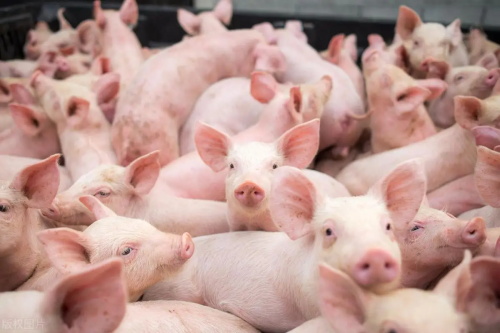
Conclusion
Detecting early pregnancy loss has historically been a hidden challenge in small ruminant farming. With the growing accessibility of veterinary ultrasound scanners, farmers now have a powerful window into the unseen world of early gestation. By adopting tools like the BXL-V50, producers can identify problems sooner, apply corrective management, and significantly improve reproductive success.
Around the world, the use of ultrasound for early pregnancy monitoring is becoming the norm rather than the exception, thanks to its non-invasive nature, real-time feedback, and significant economic benefits. As awareness and training spread globally, more small ruminant farms—whether large commercial flocks or small family-run operations—are embracing ultrasound as an indispensable part of their reproductive management programs.
Reference Sources:
Gonzalez-Bulnes, A., Santiago-Moreno, J., & Lopez-Sebastian, A. (2020). Advances in Reproductive Technologies in Small Ruminants. Animals, 10(9), 1534. https://doi.org/10.3390/ani10091534
López-Sebastián, A., et al. (2021). The Use of Ultrasound Scanning to Monitor Early Pregnancy and Improve Fertility Management in Small Ruminants. Theriogenology, 175, 172-181. https://doi.org/10.1016/j.theriogenology.2021.10.002
Godfrey, R. W., & Tarleton, B. J. (2019). Use of Ultrasound in Reproductive Management of Sheep and Goats. Journal of Animal Science and Technology, 61, 123-134. https://doi.org/10.5187/jast.2019.61.3.123

